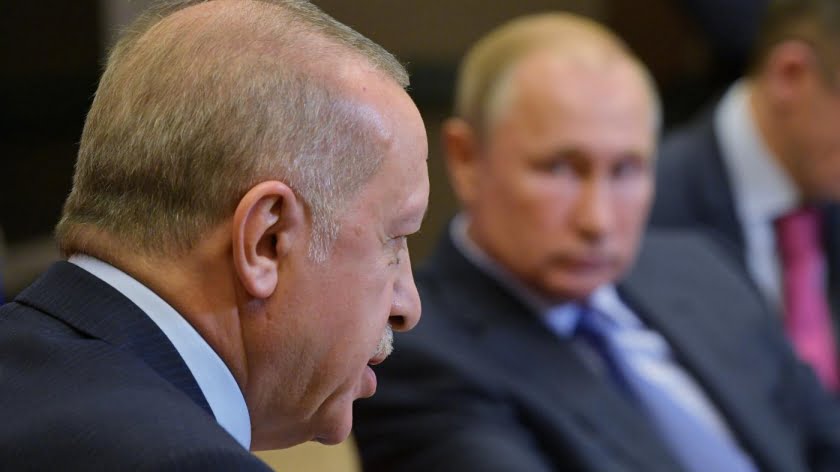The Myanmar-China Pact is a Setback for India
The state visit by Chinese President Xi Jinping to Myanmar on January 17-18, the first of its kind in 19 years, was a transformative event in regional politics from the perspective of China-Myanmar bilateral relations as well as regional security, something that should be of major concern for India.
A “comprehensive strategic partnership” is moving toward building a “Myanmar-China community with a shared future based on the aims of mutual benefits, equality and win-win cooperation,” as the joint statement issued after Xi’s visit frames it.
Xi said in his banquet speech in the capital Naypyidaw that the reason the “Paukphaw (fraternal) friendship between the two countries can last thousands of years” is that they have “stood together through thick and thin, and adhered to mutual respect and mutual benefit.”
He urged the two countries to be “good neighbors like passengers on the same boat” and create a more favorable environment for their economic and social development.
Xi said the two countries should “push the China-Myanmar Economic Corridor (CMEC) into substantive construction” and as “good brothers to pass on their friendship from generation to generation.”
China-Myanmar Economic Corridor
The CMEC allows China access to the Indian Ocean and to shorten the route for its oil and gas imports from the Persian Gulf and connects China’s relatively less developed southern regions to the world market.
A major goal of Chinese strategic planners is being realized, overcoming staunch opposition by the US. From an Indian perspective, CMEC signifies a major setback to its counterstrategy to discredit, debunk and derail the Belt and Road Initiative (BRI) projects in the region.
Meanwhile, the Citizenship Amendment Act (CAA) has caused revulsion and anger in Bangladesh and a deepening of relations between Dhaka and Beijing can be expected.
Clearly, India’s Bay of Bengal Initiative for Multi-Sectoral Technical and Economic Cooperation (BIMSTEC) agenda is spluttering. India has also lost the plot on regional connectivity.
With Nepal, Pakistan, Sri Lanka, Bangladesh and Myanmar wading into the BRI, India stands badly isolated. Things didn’t have to come to such a sorry pass.
Heavy maritime traffic will inevitably call for a much bigger Chinese naval presence in the Indian Ocean. It is entirely conceivable that the Chinese navy will at some point in the not too distant future seek access to the ports in the region which figure in its BRI matrix – Gwadar, Hambantota, Chittagong and Kyaukpyu.
The geopolitical ramifications of the CMEC are most profound for the Bay of Bengal region.
If the Strait of Malacca was supposed to be a thermometer to measure the future balance of naval power between India and China, it may not hold good any more.
India has been advancing its positions toward the western mouth of the strait with a view to challenging the expansion of Chinese maritime interests in the Indian Ocean, but the CPEC and CMEC significantly rebalance the regional power in the Indian Ocean.
Of course, it is far from fated that even economically, diplomatically and militarily ascendant China will steamroll India and ensconce itself as the predominant power in the Indian Ocean.
American analyst James Holmes recently reveled at the prospect that “a Sino-Indian great game is afoot in the Andaman Sea. It will take years, if not decades, of gamesmanship to determine a victor.”
Most certainly, the Indian interests do not lie in entrapment in esoteric game theories. What the emergent situation signals is the urgency to deepen strategic communication between New Delhi and Beijing. The political leadership must steamroll the institutional resistance to policy rethink.
Grand reception
During the Chinese president’s visit last week, Myanmar accorded a grand reception for Xi. State Counsellor Aung San Suu Kyi said China had always been a good friend of Myanmar, and fate had bound the two sides closely.
The two sides agreed to promote the construction of the Kyaukpyu Special Economic Zone, the New Yangon City and the China-Myanmar Border Economic Cooperation Zone, as well as roads, railways and power and energy infrastructures.
Overall, the visit marks the transition of the CMEC from conceptual planning to substantive construction, as Chinese Councilor and Foreign Minister Wang Yi assessed.
Wang said Myanmar’s commander-in-chief of defense services, Min Aung Hlaing, pledged to Xi that the Myanmar military would firmly support and promote the BRI.
Significantly, Wang put the partnership in the international context characterized by profound changes unseen in a century, with injustice and inequality remaining prominent in international relations, and “protectionism, unilateralism as well as bullying actions … rising,” which pose new challenges in safeguarding the two countries’ sovereignty, security and development interests.
The joint statement underscored that China “firmly supports Myanmar in its aim to adopt a development path that is in line with its national conditions, the safeguarding of its legitimate rights and interests, as well as national dignity, on the international stage, and to maintain the momentum of development and stability.”
It said the two countries agreed to continue to “enhance coordination and cooperation in regional and multilateral fora such as the United Nations, China-ASEAN cooperation and Lancang-Mekong cooperation platforms” and “render mutual support on issues concerning each other’s core interests and major concerns.”
In particular, China voiced support for “the efforts of Myanmar to address the humanitarian situation and to promote peace, stability and development for all communities in Rakhine state.”
Clearly, the three cornerstones of the emerging relationship are: the understanding and mutual commitments reached at the highest levels of leadership through sustained and intensive strategic communication (Xi received Suu Kyi six times between June 2015 and April 2019); the launch of the CMEC; and China’s firm support for Myanmar’s core interests and major concerns and its help to ward off Western bullying.
China has become a stakeholder – even guarantor – in the resolution of the Rohingya issue, considering that the terminus of the 1,600-kilometer-long CMEC-Kyaukpyu Special Economic Zone with a deep-water port opening into the Bay of Bengal – lies in Rakhine state.
The CMEC includes big cross-border oil and gas pipelines that have been operating already, while an industrial park and a major railway project are planned involving massive Chinese investments. A Xinhua report estimated that the port and industrial park combined will create more than 100,000 jobs each year for local residents and create tax revenues of US$15 billion during the “initial franchise period of 50 years.”
By M. K. Bhadrakumar
Source: Asia Times







